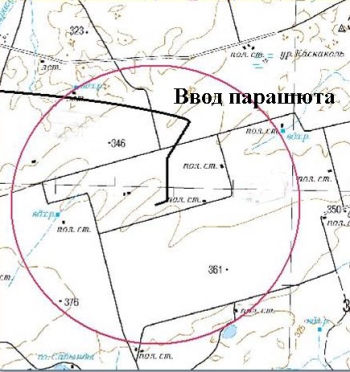Manned landing of a spacecraft
 Good day, saturated with us turned out to be the last month. First, the launch of the Soyuz TMA-11M spacecraft, then the descent of the Soyuz TMA-09M, and for dessert, the Progress M-21M spacecraft launch according to the 4-day docking pattern with proximity to the ISS on the 2nd day of flight small distance. Since my main job is to ensure the descent of spacecraft, in this article I will talk about the features of the organization of the completion of manned programs on the example of extreme landing (the “Olympic” Union TMA-09M).
Good day, saturated with us turned out to be the last month. First, the launch of the Soyuz TMA-11M spacecraft, then the descent of the Soyuz TMA-09M, and for dessert, the Progress M-21M spacecraft launch according to the 4-day docking pattern with proximity to the ISS on the 2nd day of flight small distance. Since my main job is to ensure the descent of spacecraft, in this article I will talk about the features of the organization of the completion of manned programs on the example of extreme landing (the “Olympic” Union TMA-09M).Introduction
Immediately it is worth mentioning that the organization of a manned flight is quite different from unmanned missions, but in any case, all the work on conducting dynamic operations in space can be divided into two stages: design and operational, only in the case of manned missions, these stages, as a rule, take significantly more time. In this article I will mainly deal with the operational part, since the work on the ballistic descent design is carried out continuously and includes various studies to optimize all sorts of factors affecting the safety and comfort of the crew during landing. So, let's begin.
40 days
The first approximation calculations of the descent are carried out in order to determine landing areas. Why is this done? Currently, the regular controlled descent of Russian ships can only be carried out in 13 fixed landing areas located in the Republic of Kazakhstan. This fact imposes a lot of restrictions associated primarily with the need for prior coordination with all our foreign partners of all dynamic operations. The main difficulties arise when planting in the fall and spring - this is due to agricultural work in the areas of planting. This fact must be taken into account, because besides ensuring the safety of the crew, it is also necessary to ensure the safety of the local population and the search and rescue service (PSS). In addition to the regular landing areas, there are also landing areas in case of disruption to ballistic descent, which must also be suitable for landing.
For 10 days
Preliminary calculations for descent trajectories are refined, taking into account the latest data on the current ISS orbit and the characteristics of the docked ship. The fact is that from the moment of launch to descent, a rather long period of time passes, and the mass-centering characteristics of the device change, besides, a great contribution is made by the fact that, together with the cosmonauts, the payloads from the station that can significantly change the situation return to Earth center of mass of the descent vehicle. Here it is necessary to clarify why this is important: the shape of the Soyuz spacecraft resembles a headlamp, i.e. he has no aerodynamic controls, but to obtain the necessary landing accuracy, it is necessary to control the trajectory in the atmosphere. To do this, the Soyuz has a gas-dynamic control system, but it is not able to compensate for all deviations from the nominal trajectory, therefore an extra balancing weight is artificially added to the design of the device, the purpose of which is to shift the center of pressure from the center of mass, which will allow the trajectory to descend, turning over the roll . Refined data on the main and backup schemes are sent to the MSS . According to this data, all calculated points are flown around and a conclusion is made about the possibility of landing in these areas.
')
1 day
The descent trajectory is finalized taking into account the latest measurements of the position of the ISS, as well as the forecast of the wind situation in the main and reserve landing areas. This must be done due to the fact that at a height of about 10 km, the parachute system opens. By this time, the descent control system has already done its job and cannot adjust the trajectory in any way. In fact, only wind demolition acts on the apparatus, which cannot be ignored. The figure below shows one of the options for modeling wind drift. As you can see after entering the parachute, the trajectory changes greatly. Wind drift can sometimes be up to 80% of the allowable radius of the dispersion circle, so the accuracy of the weather forecast is very important.

On the day of descent:
In addition to the ballistic and search and rescue service, many more units are involved in ensuring the launching of a spacecraft to earth, such as:
- transport control service;
- ISS management service;
- crew health service;
- telemetric and command services, etc.
Only after the report on the readiness of all services, the flight managers can decide to conduct the descent on the planned program.
After this, the transfer hatch is closed and the ship is undocked from the station. A separate service is responsible for carrying out the undocking. Here it is necessary to calculate in advance the direction of undocking, as well as the impulse that must be applied to the device in order to prevent a collision with the station. When calculating the descent trajectory, the undocking scheme is also taken into account. After undocking the ship, there is still some time before switching on the brake engine. At this time, the entire equipment is checked, trajectory measurements are made, and the landing point is specified. This is the last moment, when something else can be clarified. Then the brake motor is activated. This is one of the most important stages of the descent, so it is constantly monitored. Such measures are necessary in order in case of an emergency situation to understand which scenario to go on. At regular impulse testing, after some time there is a separation of the compartments of the ship (the descent module is separated from the domestic and instrument-aggregate compartments, which then burn in the atmosphere). If, upon entry into the atmosphere, the descent control system decides that it is unable to ensure the landing of the descent vehicle at the point with the required coordinates, the ship “breaks” into a ballistic descent. Since this all happens already in the plasma (there is no radio communication), then it is possible to establish the trajectory along which the device moves only after the resumption of radio communication. If there was a breakdown on the ballistic descent, you must quickly clarify the intended point of landing and transfer it to the search and rescue service. In the case of a regular controlled descent, the PSS experts begin to “lead” the ship back in flight and we can see the descent of the vehicle on a parachute live, and even if lucky, the operation of the soft landing engines (as in the figure).

After that, you can congratulate everyone,
Photos taken from the site: www.mcc.rsa.ru
Source: https://habr.com/ru/post/205520/
All Articles